Adam Hart
Guest Reporter

Chancellor Rachel Reeves announced her historic budget yesterday after months of intense speculation to a feisty House of Commons Chamber.
Headlines included increasing UK Government spending by £70 billion annually, funded in part by a whopping £40 billion worth of tax rises, the biggest single increase since records began.
But Labour's aim of achieving the best sustained growth in the G7 already look to be jeopardy after the OBR-Britain's tax and spending watchdog- downgraded UK forecasts, partly in response to Reeves' budget.
The government may have made it their mission to prioritise growth, but the OBR's ‘Economic and Fiscal Outlook’ report contains several worrying graphs endangering that mission.
Perhaps the most worrying is a gloomy growth outlook after the short term cash injection boost wears off in 2026.
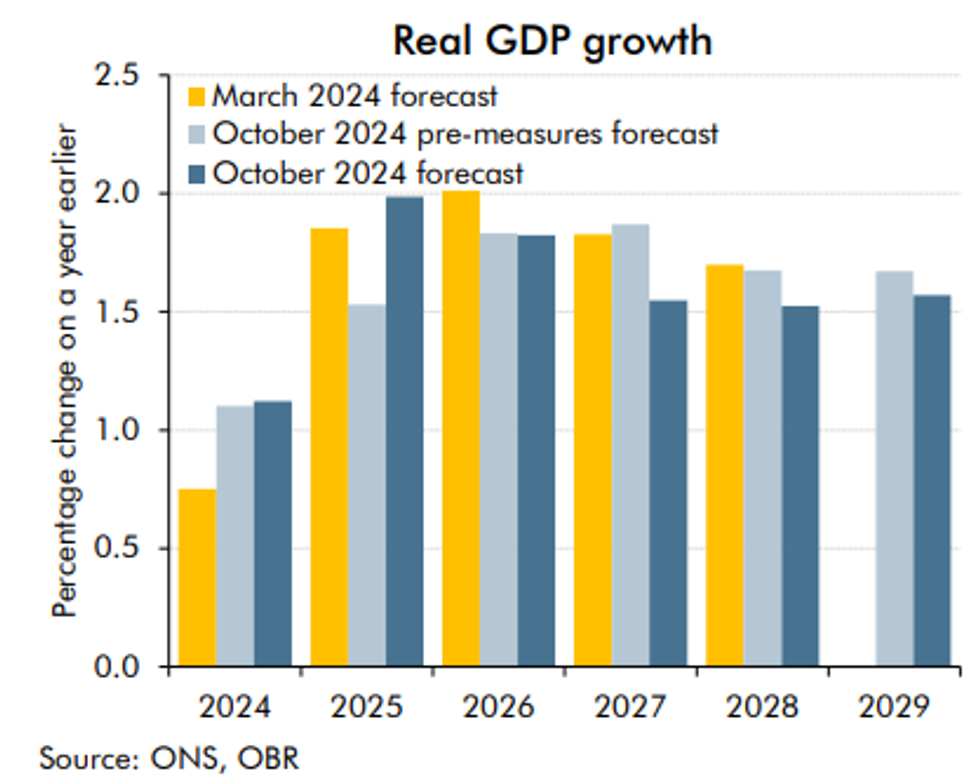
The forecast clearly shows predicted growth to be lower in 2026/27/28 than it was predicted to be in March this year, a scenario Labour will desperately hope to avoid.
Another worrying graph for Labour shows the effective tax rate rising from its current new rate of 40 per cent to a massive 42.5 per cent by 2029, making Britain one of the most heavily taxed countries in Europe.
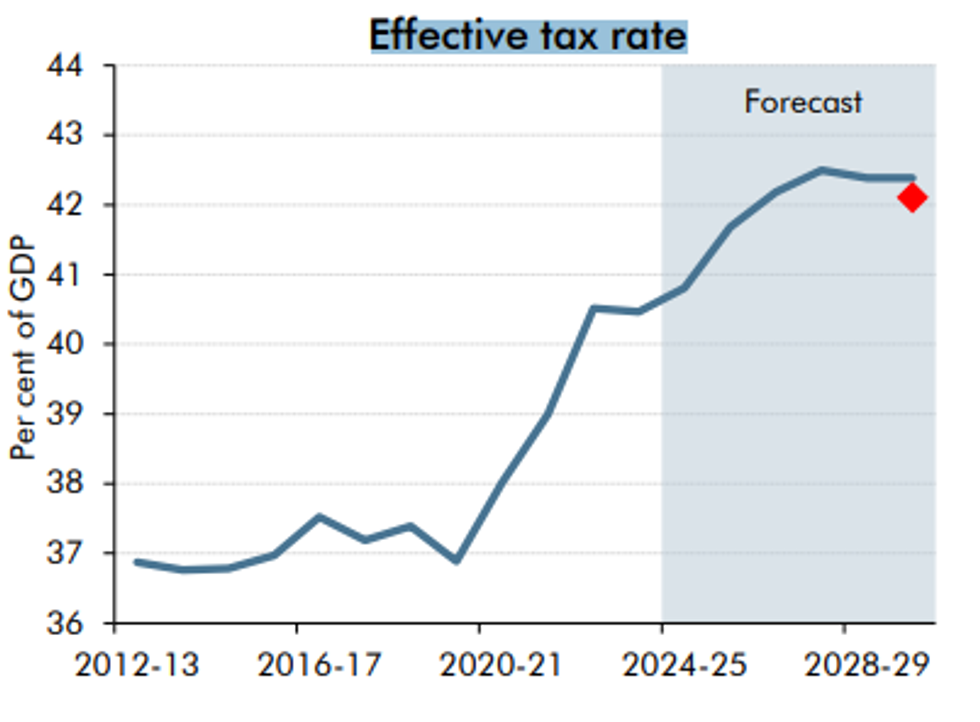
Similarly, taxes as a percentage of GDP are set to reach their highest rate ever at 38.2 per cent, up from 36.4 per cent.
This marks a rise of 1-2 per cent on the March forecast.
Reeves' £70 billion spending increase is mostly funded by tax rises, with the rest coming from more borrowing after the Chancellor changed the rules to allow the government to borrow more.
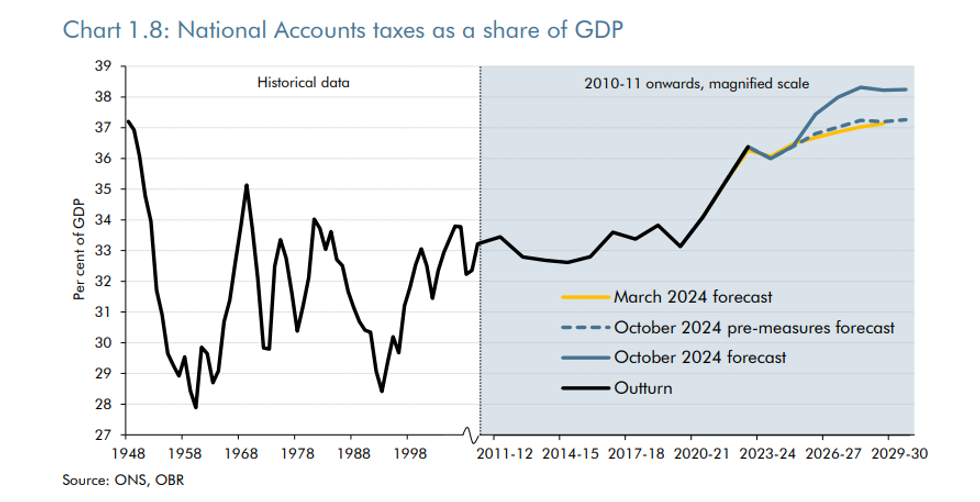
Another graph predicts public sector net debt to remain at the high rate of 97 per cent until 2029, as opposed to falling to 89 per cent as was the March prediction.
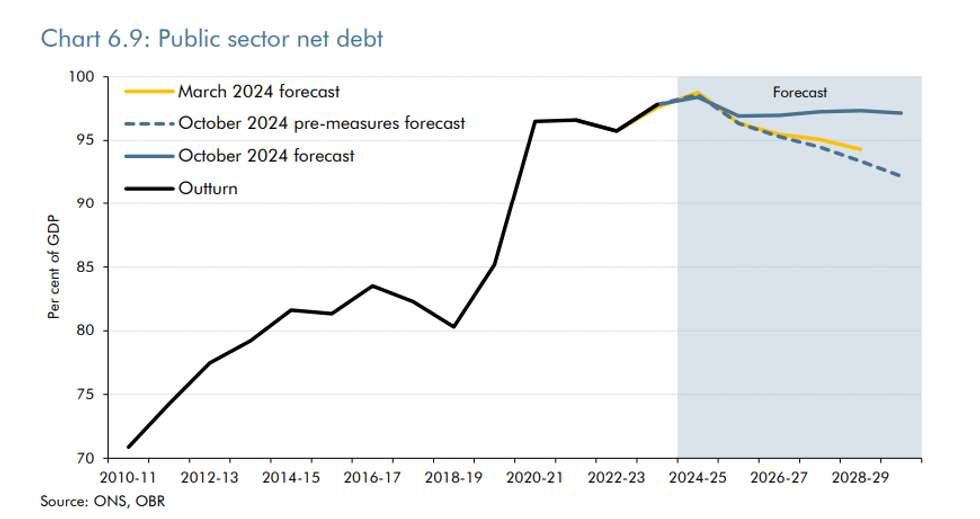
Lastly, a worrying graph has been published in relation to mortgage owners.
Though not as bad as the Truss/Kwarteng mini budget in 2022, it predicts mortgage rates to go up faster than under the Tories, up to 4.5 per cent by 2030 as opposed to the March prediction of just over 4 per cent.
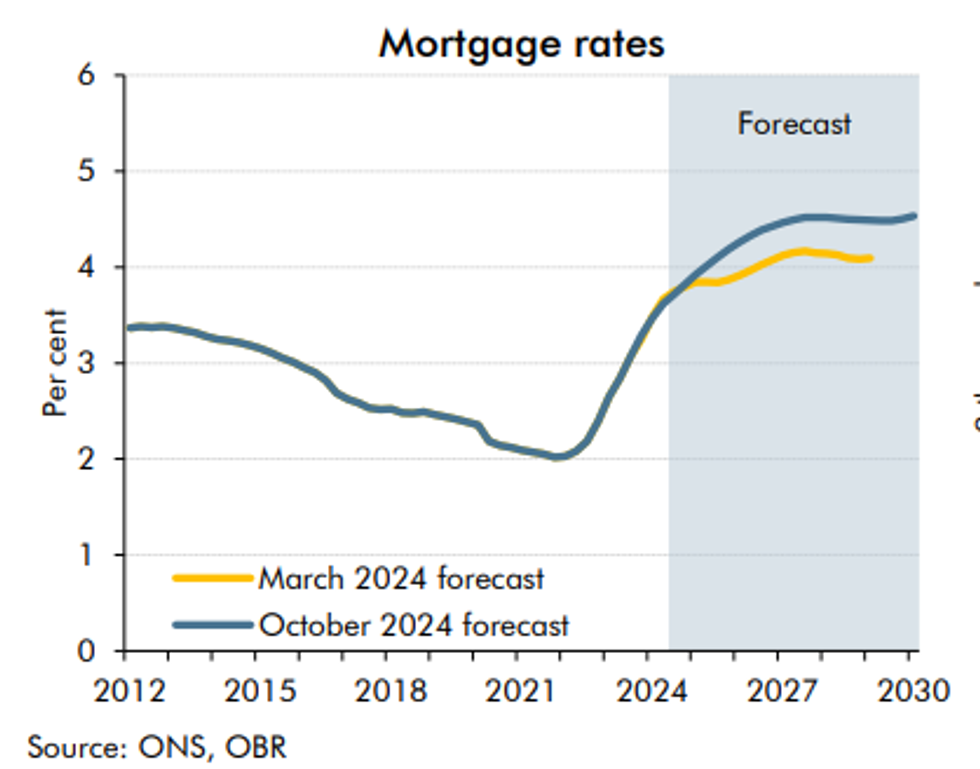
Find Out More...
